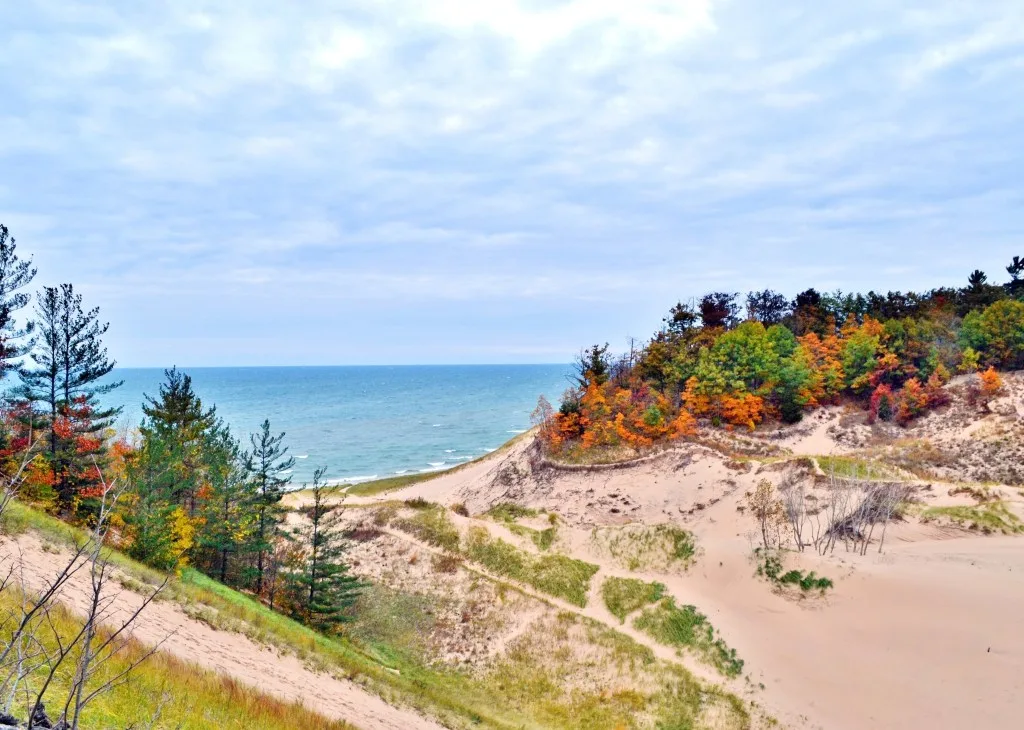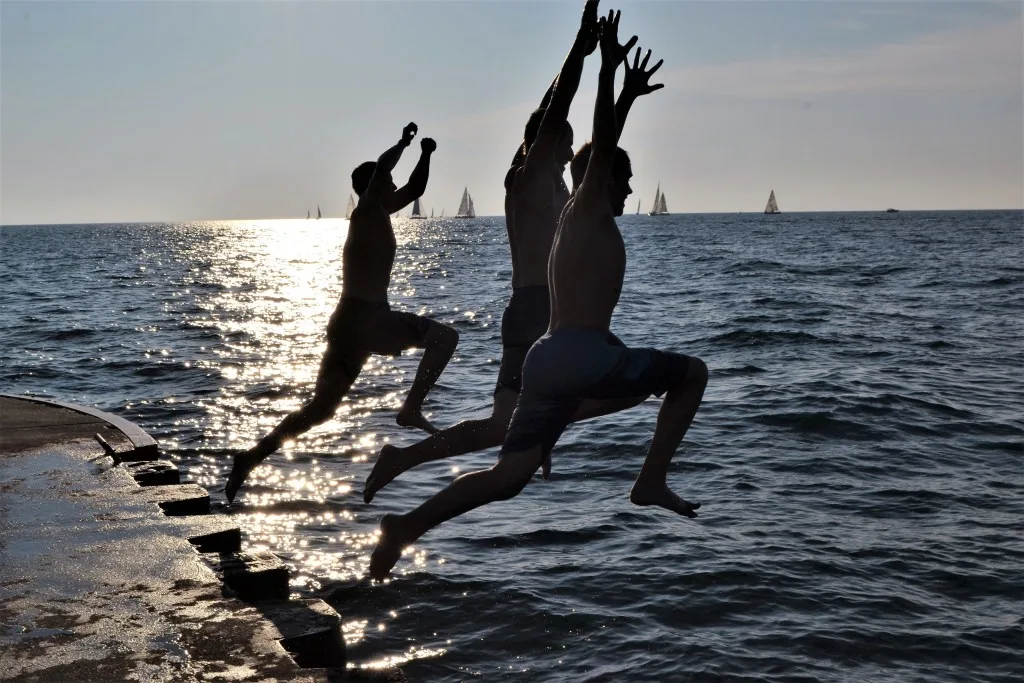The Great Lakes can be the perfect place to enjoy aquatic activities during the summer months. Swimming, fishing, and walks along the lakefront are only a few popular activities that you can enjoy.
However, the Great Lakes can be incredibly dangerous and even deadly if you’re not careful. If you’ve ever wondered which of the Great Lakes was the roughest, wonder no more!
Today, we’ll look at the five Great Lakes and share which one has a reputation for being particularly rough. Let’s dive in!
What Are the Great Lakes?
The Great Lakes are the largest group of freshwater lakes in the world. They consist of five lakes covering more than 94,000 square miles. These freshwater, interconnecting lakes lead to the Atlantic Ocean through the Saint Lawrence River. They contain 21% of the world’s surface fresh water.
The five lakes that make up the Great Lakes are Lake Superior, Lake Michigan, Lake Huron, Lake Erie, and Lake Ontario. People commonly use the lakes for transportation, migration, trade, and fishing.
The lakes are a part of the states of Michigan, Wisconsin, Minnesota, Illinois, Indiana, Ohio, Pennsylvania, and New York. However, the Canadian province of Ontario also borders the lakes.
Which Is the Most Dangerous of the Five Great Lakes?
While all five Great Lakes can be dangerous, Lake Michigan is the most hazardous Great Lake. The Great Lake Surf Rescue Project keeps detailed statistics on drownings in all Great Lakes. There were 84 drownings in the Great Lakes in 2022 and 38 in Lake Michigan.
Lake Michigan drownings are more than double all other lakes, so ensure you’re extra careful if you plan to enjoy some aquatic adventures on Lake Michigan.

Why Is Lake Michigan the Deadliest Lake?
Jamie Racklyeft is the executive director of the Great Lakes Water Safety Consortium and blames the dangers of Lake Michigan on the weather conditions. She said, “Since the wind tends to blow from west to east, it can build bigger and bigger waves across the lake.” Lake Michigan’s location and infrastructure include many public beaches and parks that attract tourists, especially during the summer.
Racklyeft also blames a warming climate for some of the issues. She said, “When the water gets warmer, it draws more people to the beaches. If there’s dangerous conditions in the water once they are drawn out, that can lead to more drownings.”
Lake Michigan is a highly trendy tourist spot, especially in Northern Illinois and Northern Indiana. You’ll find packed beaches throughout the summer that will have you thinking you’re on an ocean beach along the coast, not in the heart of the Midwest.
Pro Tip: Find out What Are The Most Dangerous Creatures in Lake Michigan before you go for a swim.
How Deep Is Lake Michigan?
If you have thalassophobia or fear deep water, you may want to avoid Lake Michigan. The lake averages 279 feet deep but is 922 feet at its deepest point. While it’s not the deepest lake in the country (Crater Lake), it still extends relatively far down.

Can You Swim in Lake Michigan?
While you should maintain caution when swimming in any vast body of water, you can swim in Lake Michigan. The lake has an uneven bottom with many holes and extremely steep drop-offs. Indiana Dunes National Park is a popular place to relax on a Lake Michigan beach. However, the only beach with lifeguards is West Beach. Many beaches along the Lake Michigan coast don’t have anyone monitoring them, and you should only swim at your own risk.
Some dangers of swimming in Lake Michigan include rip currents and sudden changes in depth from drop-offs and holes. Swimmers in a rip current can sweep out into the lake. Swimming against a rip current is dangerous as it can be very exhausting, leading to drownings in the lake.
How Dirty Is Lake Michigan?
Lake Michigan is relatively clean for such a massive lake. You’ll see trash floating in it and washing on shore, but that’s sadly nothing out of the ordinary for a lake this size. The states do an excellent job of keeping beaches clean so swimmers can use the water.
They’re constantly testing the waters and won’t hesitate to shut down public beaches when they detect potentially dangerous toxins.

What Lives in Lake Michigan?
One of the best things about Lake Michigan is that it gives you the ocean feel without many of the aquatic dangers. If you’re worried about Jaws taking a bite out of you while in the ocean, you need to take a trip to Lake Michigan. There have been no documented shark cases in the history of the lake.
While there may not be sharks, there is a generous amount of fish for anglers to try to catch. You’ll find trout, salmon, walleye, and smallmouth bass fisheries around the lake. The largest fish living in Lake Michigan is the lake sturgeon. The record catch weighed upwards of 300 pounds.
One of the scariest-looking animals in Lake Michigan is the Sea Lamprey. However creepy as it may look, it’s no threat to humans. Once in freshwater, it stops eating. Regarding animals living in the lake, you have very little to worry about while enjoying Lake Michigan.
Pro Tip: Before you dive in to Lake Michigan, find out What’s at the Bottom of Lake Michigan?
What Draws Tourists to Lake Michigan?
Millions of people use Lake Michigan each year. The lake butts up against the big city of Chicago and provides residents with entertainment and a source of recreation. The lake has more than 1,638 miles of shoreline and many high-quality public beaches. You don’t have to try too hard to find a comfortable beach around the lake to sit and relax.
There are often many beaches to consider. The biggest problems will likely be finding a parking spot and remembering to apply sunscreen.
Is Lake Michigan Worth Visiting?
Lake Michigan is an excellent place to visit, especially during summer. You can take a dip and cool off when the Midwestern summer heat and humidity are too much to bear. However, don’t come during the winter months expecting the same experience.
Winters in this neck of the woods can be intense. The same winds that create strong ocean-like waves on the lake produce bone-chilling wind chills. It’s not uncommon to see negative wind chills in January and February. So plan your trip to Lake Michigan wisely, and you can have a fantastic experience.
Where will you stay during your trip to Lake Michigan? Tell us in the comments!
Discover the Best Free Camping Across the USA
To be honest with you, we hate paying for camping. There are so many free campsites in America (with complete privacy).
You should give it a try!
As a matter of fact, these free campsites are yours. Every time you pay federal taxes, you’re contributing to these lands.
Become a FREE CAMPING INSIDER and join the 100,000 campers that love to score the best site!
We’ll send you the 50 Best Free Campsites in the USA (one per state). Access the list by submitting your email below: